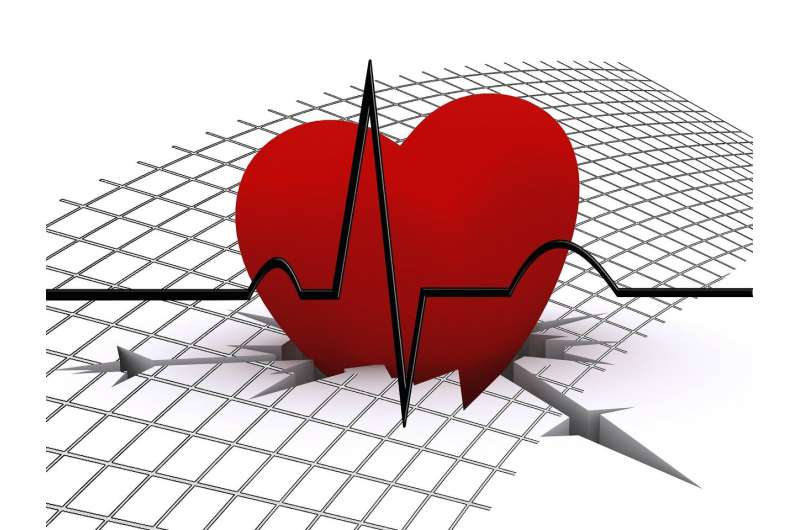What would you guess are the two biggest killers in the world? Based on media coverage, maybe you guessed gun violence, accidents or COVID-19. But the top two killers are actually cardiovascular disease and cancer. These two diseases combined account for nearly 50% of deaths in the U.S.
Cardiovascular disease and cancer seem to be quite different on the surface. But newly discovered parallels between the origins and development of these two diseases mean that some treatments may be effective against both.
I am a biomedical engineer who has spent two decades studying and developing ways to improve how drugs travel through the body. It turns out that tiny, engineered nanoparticles that can target specific immune cells may be a way to treat both cancer and cardiovascular disease.
Cardiovascular disease and cancer
Atherosclerosis is the most deadly form of cardiovascular disease. It results from inflammation and the buildup of fat, cholesterol and other lipids in the blood vessel wall, forming a plaque. Most heart attacks are caused by plaque rupture. The body’s attempt to heal the wound can form a blood clot that blocks blood vessels and result in a heart attack.
On the other hand, cancer usually arises from genetic mutations that make cells divide uncontrollably. Unrestrainable, rapid cell growth that is untreated can be destructive because it is difficult to stop without harming healthy organs. Cancer can start from and occur in any organ of the body.
Although cardiovascular disease and cancer appear to have different origins and causes, they share many risk factors. For example, obesity, smoking, chronic stress and certain lifestyle choices like poor diet are linked to both diseases. Why might these two diseases share similar risk factors?
Many of the similarities between cardiovascular disease and cancer can be traced to inflammation. Chronic inflammation is a primary cause of atherosclerosis by damaging the cells lining the blood vessels and progressively worsening plaques. Likewise, chronic inflammation can initiate cancer by increasing mutations and support cancer cell survival and spread by increasing the growth of the blood vessels that feed them nutrients and suppressing the body’s immune response.
Treating two conditions at once
Research hints that therapies designed for cancer can also help treat atherosclerosis.
One example is drugs that target immune cells called macrophages in tumors and cause them to eat cancer cells. It turns out a similar drug can cause macrophages to clear dead and dying cells in atherosclerosis, which shrinks plaques.
Another example are antiglycolytic therapies that prevent the breakdown of glucose. Glucose, or sugar, is the body’s main source of energy. These drugs can make diseased tumor blood vessels and atherosclerotic blood vessels look more “normal,” essentially reversing the disease process in those vessels. They can also reduce inflammation in atherosclerosis.
Although currently marketed treatments like statins and fibrates can lower lipid levels and blood clotting in atherosclerosis, these drugs have not sufficiently addressed the risk of death from cardiovascular disease. To improve outcomes, clinicians are increasingly using multiple drugs directed against different targets. One intriguing class of treatments is sodium glucose cotransporter-2 inhibitors, which are traditionally used to treat diabetes. Researchers have shown that these drugs both provide significant protection from cardiovascular disease and treat cancer.
Clinical trials on statins and sodium glucose cotransporter-2 inhibitors indicate a close overlap between inflammation, metabolism and cardiovascular disease that suggests new treatment opportunities. One example is immunotherapies that “inhibit the inhibition” of immunity—that is, they take off the brakes that tumors place on the immune system. This approach to treat cancer also reduced atherosclerotic plaques in animal studies and reduced vascular inflammation in a small study in people.
A nanomedical Trojan horse
A recent discovery showed that nanotubes—a very small particle made of carbon that is over 10,000 times thinner than a human hair—can go into specific immune cells, travel through the bloodstream and enter tumors as a Trojan horse. These nanotubes can carry anything that researchers put on them, including drugs and imaging contrast agents.
The immune cells carrying the nanotubes naturally home in on tumors through the inflammatory response. Since cancer and atherosclerosis are both inflammatory diseases, my research team and I have been studying whether nanotube-loaded immune cells may also serve as delivery vehicles to plaques.
Nanotubes can be loaded with a therapy that stimulates immune cells to “eat” plaque debris and thus reduce plaque size. Moreover, restricting drug delivery specifically to those immune cells reduces the risk of off-target side effects. These nanotubes can also be used to improve diagnosis of cardiovascular disease by highlighting plaques.
Another way nanoparticles can enter tumors is by squeezing through openings in new blood vessels grown in inflammatory conditions. This is known as the enhanced permeation and retention effect, where larger molecules and nanoparticles accumulate in tissues with leaky blood vessels and remain there for some time because of their size. First discovered in cancer, researchers are applying this effect to improve drug delivery for cardiovascular disease, which can also involve leaky blood vessels.
Improving drug development
The molecular pathways cancer and cardiovascular disease share have important regulatory implications. The costs involved in getting drugs into the clinic are enormous. The possibility of applying the same drug to two different patient populations offers big financial and risk-reduction incentives. It also offers the potential for simultaneous treatment for patients with both diseases.
Nanoparticle-based cancer drugs first entered the clinic in 1995, and researchers have developed many others since. But there is currently only one cardiovascular nanodrug approved by the Food and Drug Administration. This suggests opportunity for new nanotherapy approaches to improve cardiovascular drug efficacy and reduce side effects.
Because of the parallels between cancer and cardiovascular disease, cancer nanodrugs may be strong drug candidates to treat cardiovascular disease and vice versa. As basic science discovers other molecular parallels between these diseases, patients will be the beneficiaries of better therapies that can treat both.


